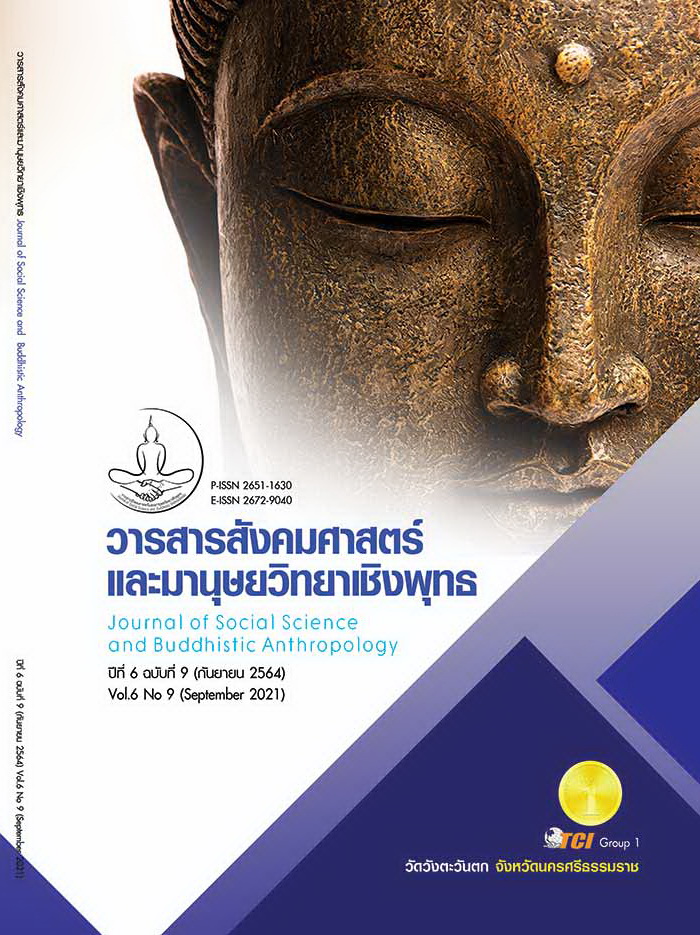THE COMPETITIVENESS MODEL OF CULTURAL TOURISM IN AYUTTHAYA PROVINCE FROM A SERVICE PROVIDER’S PERSPECTIVE
Keywords:
Model, Competitiveness, A Service Provider’s Perspective, Cultural TourismAbstract
The objective of this article were to study the components of the model, develop a model and evaluate the competitiveness model of cultural tourism in Pha Nakhon Si Ayutthaya Province, from a service provider perspective. By using a mixed research method the target group were Luminaries of 8, 17 experts. The samples group were 136 involved. The sample size was determined from the Taro Yamane formula (1973) by random sampling and simple randomization. The tools used are content analysis. Structured interview Estimate scale type questionnaire. The statistical questionnaire was examined: frequency, percentage, mean, standard deviation, median, inter-quartile range, and multiple regression analysis. The results of the research were as follows: The competitive model of cultural tourism in in Pha Nakhon Si Ayutthaya province from a service provider perspective consists of 3 main components and 12 key factors including Facilities, Transportation, Hospitality, Public relations. The cultural tourism consists of management, technology, politics, law, The competitiveness comprise of tourism product and service development, Sustainable tourism development Local community participation which has been certified by an expert. The model confirmation results were found to be appropriate. The possibilities are on a large scale. The hypothesis testing results showed that the service of cultural tourism sites in hospitality was transportation facilities environment of cultural tourism in technology, law, management that affect the competitiveness of cultural tourism. At the statistical significance level of .05.
References
ข่าวอยุธยา. (2562). การท่องเที่ยวอยุธยามีนักท่องเที่ยวเพิ่มขึ้นเงินสะพัดกว่าหมื่นล้านบาท. เรียกใช้เมื่อ 25 เมษายน 2563 จาก https://www.khaoayutthaya.com/archives/4433/
จักรวาล วงศ์มณี. (2561). สภาพแวดล้อมภายนอกที่ส่งผลกระทบต่อธุรกิจนำเที่ยวไทยและแนวทางการปรับตัวของธุรกิจนำเที่ยวในสภาวการณ์ที่เปลี่ยนแปลง. วารสารมนุษยศาสตร์และสังคมศาสตร์ มหาวิทยาลัยราชภัฏอุบลราชธานี, 9(2), 66-77.
นุชนารถ รัตนสุวงศ์ชัย. (2554). กลยุทธ์การพัฒนาการท่องเที่ยวเชิงวัฒนธรรม. วารสารมนุษยศาสตร์ มหาวิทยาลัยเกษตรศาสตร์, 18(1), 31-50.
พบพร โอทกานนท์. (2555). รูปแบบคุณภาพการบริการ ภาพลักษณ์แหล่งท่องเที่ยว และความพึงพอใจที่ส่งผลต่อความตั้งใจเชิงพฤติกรรมการท่องเที่ยวแบบพำนักระยะยาวของชาวยุโรปและอเมริกัน. ใน ดุษฎีนิพนธ์บริหารธุรกิจดุษฎีบัณฑิต สาขาการตลาด. มหาวิทยาลัยอีสเทิร์นเอเชีย.
วาโร เพ็งสวัสดิ์. (2553). การวิจัยพัฒนารูปแบบ. วารสารมหาวิทยาลัยราชภัฏสกลนคร, 2(4): 2-14.
วิทัศน์ ศรีสุวรรณเกศ. (2561). แบบจำลองปัจจัยเชิงสาเหตุที่มีอิทธิพลต่อความภักดีของการท่องเที่ยวเชิงวัฒนธรรมล้านนาตะวันออก. ใน ดุษฎีนิพนธ์บริหารธุรกิจดุษฎีบัณฑิต สาขาบริหารธุรกิจ. มหาวิทยาลัยเทคโนโลยีราชมงคลพระนคร.
สำนักงานการท่องเที่ยวและกีฬาจังหวัดอยุธยา. (2562). การท่องเที่ยวของอยุธยาในปี 2561. เรียกใช้เมื่อ 25 เมษายน 2563 จาก https://ayutthaya.mots.go.th/news_view.php?
สำรวย เมฆวรวุฒิ. (2550). การพัฒนาการท่องเที่ยวเชิงอนุรักษ์ : กรณีศึกษาตลาดน้ำตลิ่งชัน. ใน วิทยานิพนธ์ศิลปศาสตรมหาบัณฑิต สาขาสังคมศาสตร์เพื่อการพัฒนา. มหาวิทยาลัยราชภัฏธนบุรี.
สุทิพย์พร โชติรัตนศักดิ์. (2555). การวิเคราะห์ปัจจัยที่มีอิทธิพลต่อการท่องเที่ยวทางวัฒนธรรมอย่างยั่งยืนในเขตกรุงเทพมหานคร. ใน ปรัชญาดุษฎีบัณฑิต สาขาวิชาการศึกษาเพื่อการพัฒนาท้องถิ่น. มหาวิทยาลัยราชภัฏบ้านสมเด็จเจ้าพระยา.
องค์การบริหารการพัฒนาพื้นที่พิเศษเพื่อการท่องเที่ยวอย่างยั่งยืน. (2556). การจัดการการท่องเที่ยว สร้างสรรค์เชิงวัฒนธรรม. เรียกใช้เมื่อ 25 เมษายน 2563 จาก https://www.egov.go.th/th/government-agency/211/
Koster, E. H. (1996). Science Culture and Cultural Tourism. In Mike Robinson, Nigel Evans and Paul Callaghan, eds. In Tourism and Cultural Canang: Tourism and Culture towards the 21st Century, pp. 227–238. Sunderland: The Center for Travel and Tourism and Business Education.
Pinkaew, K. (2013). Cultural Tourism. Retrieved December 25, 2020, from http://tourism-dan1.blogspot.com/2013/06/blog-post.html?m=1
Yamane, T. (1973). Statistics: An Introductory Analysis. (3rd ed.). New York: Harper and Row Publications.








